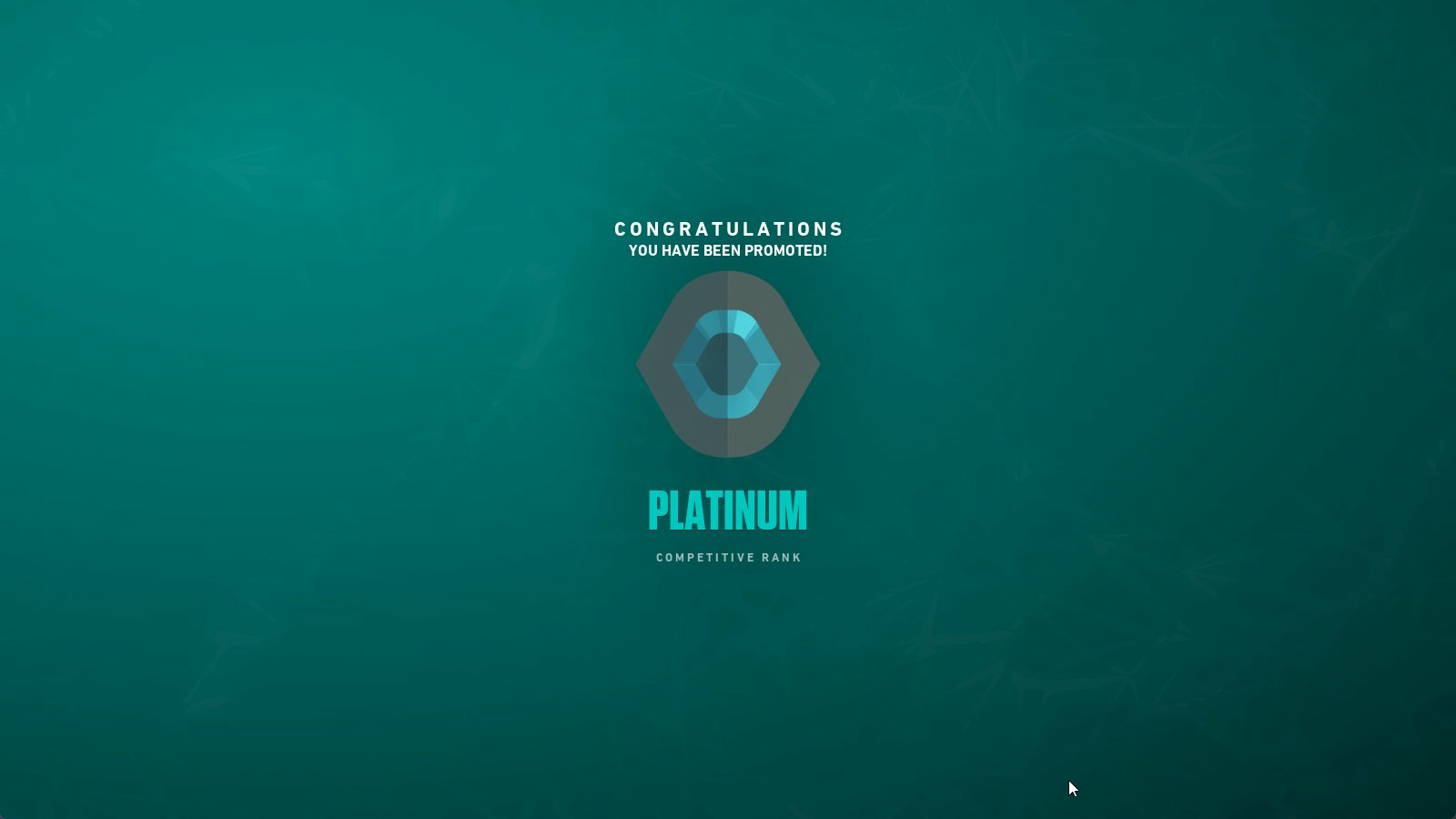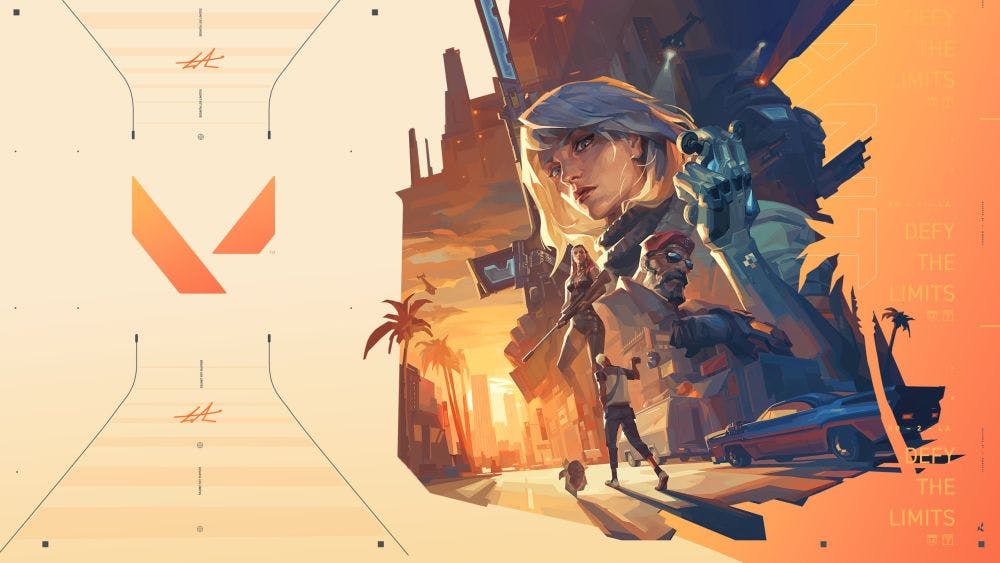Ranks
Whether for riches, glory, or a bit of both, the VALORANT rankings can be your ticket to tactical FPS esports immortality. But until you know the systems inside and out, you’ve got a long road ahead of you, agent. And that’s exactly why we made this page…Overview
Bragging rights, going pro, joining a celebrated team, dominating Twitch, or just pure and simply kicking ass seven ways from Sunday – there are many reasons you’d need to climb the ranks in VALORANT.
Welcome to your hub for all things VALORANT rankings, where we’ve collected every shred of rank-related content for your convenience.
Here you’ll find things like…
- How the VALORANT ranking system works.
- All the need-to-knows about act rank.
- Rank distribution and restrictions.
- What exactly determines RR.
- How to climb the ranks.
- How to double rank up.
- Who the top 1% of VALORANT players are.
Whether you’ve got a mile-wide competitive streak, just want to prove your skills, or are dreaming of competing at the VALORANT Champions Tour, you’re in the right place.
These pages will give you everything you need to know about VALO ranks to top the leaderboards.
Rankings 101
You’re not the first to wonder how the VALORANT ranks work.
You can enter VALORANT’s ranking system once you reach account level 20, by playing other unranked game modes. Once you’re there, you’ll have to play five placement matches – how you perform in these determines which rank you start at.
Competitive VALORANT is divided into Episodes, each containing three Acts. Your rank gets reset for each Act, and you’ll need to play new placement matches to determine your rank for each Act.
Each Act lasts roughly 2 months, so that’s how often your rank will reset and you’ll need to go through a new series of placements. You’ll only play five rank placement matches in the first Act of an Episode though – for Acts 2 and 3, you’ll receive your ranking after one placement game.
Most players start at Iron rank, but exceptional performance can lead to higher rank placement like Bronze, tier 2. The highest rank placement possible is Ascendant tier 1.
Starting a new Episode a few ranks lower than you ended the last Episode is perfectly normal. It’s VALORANT’s way of making you prove you’re worthy of those higher ranks.
There’s no rank decay system, so you won’t drop rank if you stop playing. If you don’t play a Competitive match for more than 14 days though, you’ll have to sit one placement match to re-establish your rank.
Every VALORANT rank
VALORANT’s rank system involves 25 ranks split into nine tiers, 3 in each rank except the highest.
Those ranks listed in order are:
- Iron (1-3)
- Bronze (1-3)
- Silver (1-3)
- Gold (1-3)
- Platinum (1-3)
- Diamond (1-3)
- Ascendant (1-3)
- Immortal (1-3)
- Radiant (1)
Most players hold one of the Silver or Gold ranks, while only an elite 1% of players ever reach the Immortal rank. Yes, that still leaves the highest VALORANT rank – Radiant, reserved for the top 500 players of each region.
Hey, no one said dominating ranked mode was going to be easy! (but nothing worthwhile comes easily, you dig?)
!All VALORANT rankings and tiers
Climbing the ranking system
Rising through the ranking system involves scoring well with two separate ratings, the RR and MMR.
RR is your Rank Rating. It’s the points you earn after each competitive game. You can earn up to 50 RR points per match, and how many you receive depends on a bunch of performance-related factors.
When you’re placed in a rank, you’ll have 50 RR in that rank/tier. To reach the next rank or tier within that rank, you need to hit 100 RR.
While wins and exceptional performance earn you RR, losses, surrenders, and poor performance cause your RR to drop. This can cause you to fall to a lower rank.
MMR is more complicated. It’s a hidden matchmaking ranking system that Riot uses to place players against opponents of a similar skill level. Every player has their own place on this mysterious ranking, which will rise and fall along with their and other players’ performance.
It’s like an invisible global leaderboard. And it’s relevant to the ranking system because it affects:
- Who you play against.
- How much RR you earn.
- How fast you rise to higher ranks.
- The rank you place in during each new Act.
- Whether you skip ranks or tiers due to exceptional performance.
You’ll never see your MMR, but it’s how a player ranked Platinum could compete against a higher-ranked Ascendant player, for example.
Don’t overthink it, just trust that VALORANT wisely uses its powers to place you against players of your skill level and ensure you’re sitting at the most appropriate rank for your skills.
Act rank
!VALORANT act rank triangle at Immortal rankTo further complicate VALORANT’s ranked system, you have an entirely separate Act rank, too. With each match you win in an Act, this triangular badge fills in with a small triangle, colored to reflect the rank you competed and won in.
Whatever rank you are when the topmost triangle fills in defines your Act rank and the quality of rewards you receive when the Act ends.
If you were to dominate Radiant, the highest rank in VALORANT, for the whole Act, this badge would be a solid gold triangle. For most players though, this badge will be a colorful representation of how you climbed the ranks.
Rank restrictions
VALORANT’s focus is on ranked competitive play, but Riot wants players to be able to play with friends too, even if they’re not of the same rank level.
For friends in a group of five, there are no restrictions, regardless of how high your rank. Just bare in mind, your overall rank will still be affected by your RR gains or losses.
For groups of less than five players, these restrictions apply:
- No groups of four.
- Groups of two or three must stick within rank disparity restrictions.
Those rank disparity restrictions are pretty simple:
-
Lowest-ranked player in the team: Iron or Bronze (tiers 1-3).
-
Highest-ranking player that team can play with: Silver (tiers 1-3).
-
Lowest-ranked player in the team: Silver (1-3).
-
Highest-ranking player that team can play with: Gold (1-3).
-
Lowest-ranked player in the team: Gold (1-3).
-
Highest-ranking player that team can play with: Platinum (1-3).
It’s a little different for the highest ranks in VALORANT. For players ranked Platinum and above, the highest-ranked player in a team can be no more than exactly one rank higher than the lowest rank, including tier.
Here’s some examples:
-
Lowest-ranked player in the team: Platinum (1).
-
Highest-ranking player that team can play with: Ascendant (1).
-
Lowest-ranked player in the team: Ascendant (2).
-
Highest-ranking player that team can play with: Immortal (2).
Ranking distribution
You won’t see where you’re placed on the ranked leaderboards until you’ve played at least 50 competitive ranked matches of VALORANT.
But knowing the ranking percentages isn’t just a curiosity thing, it’s strategic and it’s motivational. We’re here to help with that. What rank are the top 1% of VALORANT players in? Your answers are here…
Rank distribution August 2023
- Iron: 5.3%
- Bronze: 15.9%
- Silver: 22%
- Gold: 21.4%
- Platinum: 17.1%
- Diamond: 11.4%
- Ascendant: 5.3%
- Immortal: 1.4%
- Radiant: 0.03%
Rank distribution June 2023
- Iron: 5.3%
- Bronze: 15.9%
- Silver: 22%
- Gold: 21.4%
- Platinum: 17.1%
- Diamond: 11.4%
- Ascendant: 5.3%
- Immortal: 1.4%
- Radiant: 0.03%
Rank distribution May 2023
- Iron: 5.1%
- Bronze: 15.6%
- Silver: 22.1%
- Gold: 21.2%
- Platinum: 16.9%
- Diamond: 11.6%
- Ascendant: 5.7%
- Immortal: 1.7%
- Radiant: 0.04%
Rank distribution April 2023
- Iron: 8.7%
- Bronze: 19.6%
- Silver: 23%
- Gold: 20.1%
- Platinum: 14.9%
- Diamond: 9%
- Ascendant: 3.8%
- Immortal: 1%
- Radiant: 0.03%
Rank distribution March 2023
- Iron: 7.7%
- Bronze: 19.3%
- Silver: 23.5%
- Gold: 20%
- Platinum: 14.7%
- Diamond: 9.4%
- Ascendant: 4.1%
- Immortal: 1.1%
- Radiant: 0.01%
Rank distribution February 2023
- Iron: 10.6%
- Bronze: 23.5%
- Silver: 25%
- Gold: 17.9%
- Platinum: 12.5%
- Diamond: 7.2%
- Ascendant: 2.5%
- Immortal: 0.5%
- Radiant: 0.03%
All Related Guides
- 1
- 2


_1681822373586.png&w=3840&q=75)




